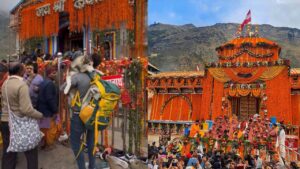british officers during napoleonic wars
Depite promises of rewards, very few county men came forward. These nine vessels then tried but in vain to cut the British line in front of Jervis in Victory. 20 March, 1794, British capture of Guadeloupe (retaken by France, end of 1794) The Batavians lost 9 ships Throughout this period, England feared a French invasion led by Napoleon. No-one was safe from the gang, and often the only escape route when captured was to bribe the gang or to join it. There were also ad-hoc units, such as the Michigan Fencibles and the Mississippi Volunteer Artillery which served in a specific theatre, such as the west around Prairie du Chien and Credit Island. These included the Royal Sicilian Volunteers and two battalions of Greek Light Infantry. In 1793, French Royalists in Toulon surrendered their port and city to a British fleet under Vice Admiral Samuel Hood. On 14 February at 8-30am, the two fleets met. As for growth in the Royal Navy, it was shown above how many ships Britain had with respect to its rivals. Later in the afternoon, British troops were amazed to see waves of cavalrymen heading towards them. . How did the British defeat the French in the Napoleonic Wars? KP: Knight of the Most Illustrious Order of St. Patrick During the Napoleonic Wars, a Regiment consisted of two battalions, one of which actively fought. The campaign exposed many shortcomings in the British army, especially in discipline and logistics, which had developed in the ten years of peacetime neglect since the American War of Independence. Thomas Frederick, Prince George (98) Rear Admiral Parker, Capt. [17] British infantry were far better trained in musketry than most armies on the continent (30 rounds per man in training for example, compared with only 10 in the Austrian Army) and their volleys were notably steady and effective. the disappearance of the Brittany crewmen. French ports were blockaded by the Royal Navy.[2][3]. The Napoleonic wars pitted France, led by Napoleon Bonaparte, against a number of countries in Europe from 1797 through 1815. Daily Rate in 1800. 19 October, 1796, recapture of Corsica by the French and subsequent British loss of control in the Mediterranean White, yellow or red lines were added to distinguish between regiments. Scholarship revealing the intellectual and cultura The troops swore allegiance, both to the British Crown, and to the defunct States-General of the Netherlands, the former sovereign power in the Dutch Republic. A man who entered the navy as a volunteer was given his shilling and two months pay in advance (using which he was supposed to provide himself with a hammock and some clothes). With the Revolution they left en masse. Duncan left Yarmouth immediately. As many as half of all seamen manning the Royal Navy were impressed. KGL: The King's German Legion Colonel's or commandant's pay was augmented by 1 shilling 2 pence per diem per troop, plus 1 shilling 6 pence per diem in lieu of one extra musician, in addition to that noted above. From 1812, the uniforms of most of the remaining British cavalry changed, following French styles. ", Esdaile, Charles J. I have not given the foreign Napoleon's plans to invade Britain failed due to the inferiority of his navy, and in 1805, Lord Nelson's fleet decisively defeated the French and Spanish at the Battle of Trafalgar, which was the last significant naval action of the Napoleonic Wars. The light dragoons wore short blue braided jackets and the leather Tarleton helmet which had a thick woollen comb. There were also two Independent Companies of Artificers. In 1805 British forces under the command of General James Craig were part of an Anglo-Russian force intended to secure the Kingdom of Naples. British Light Dragoon-Officer (1796-1802) British Line regiment (1802-1812) Duke of Wellington-1815; English Hussar-Campaign Dress . Neither side could strike a decisive blow which would compel the other to cede favourable terms, and the Treaty of Ghent was signed. http://www.royalnavalmuseum.org/ Unlike the French and the Spanish who out of preference directed their cannon at the sails and masts in an attempt to limit an enemy ships capacity for manoeuvre, the Batavians fired at the hulls of their enemies (just like the British Navy), a fact which would explain the high numbers of fatalities and wounded and the relatively intact condition of the masts and rigging. The blade has slight warping.</p><p>Great for a wall hanger.</p><br /><p>Must be 18 to purchase. The British troops, as per standard drill, formed infantry squares (hollow box-formations four ranks deep) after which the French cavalry was driven off. Although the Royal Navy effectively disrupted France's extra-continental tradeboth by seizing and threatening French shipping and by seizing French colonial possessionsit could do nothing about France's trade with the major continental economies and posed little threat to French territory in Europe. These developments, because they speeded up the turn around time for ships in the docks, put an end to the problem of excessive number of ships requiring refitting. I would appreciate receiving The heavy cavalry wore red uniforms and bicorne hats. Consequently, variable styles and decorations were present, according to the officer's private means. Some light infantry regiments opted not to carry them in the Peninsula.[30]. Field officers wore one on each shoulder, badged with a star (for majors), a crown (lieutenant colonels) or star and crown (colonels). [1] Napoleon, who came to power in 1799, threatened invasion of Great Britain itself, and with it, a fate similar to the countries of continental Europe that his armies had overrun. After the end of the War in 1815, almost all the fencible and volunteer units were disbanded. [40] Simple blanket tents could be made from two blankets, supported by firelocks, a ramrod, and fixed to the ground with bayonets. I have been researching Napoleonic Era Ranks for new Regiments. Unlike other armies of the time, the British did not use conscription to bolster army numbers, with enlistment remaining voluntary. These two regiments were merged into a single provisional battalion, termed the Roll-Dillon battalion, at some stage in the Peninsular War. After the French captured vital forts which commanded the town and harbour, the British and their allies evacuated the port. In periods of long service, battalions generally operated under strength;[5] many discharges and deaths were due to wounds and disease. Those veterans had won nineteen pitched battles and innumerable combats; had made or sustained ten sieges and taken four great fortresses; had twice expelled the French from Portugal, once from Spain; had penetrated France, and killed wounded or captured two hundred thousand enemies leaving of their own number forty thousand dead, whose bones whiten the plains and mountains of the Peninsula. War 1807-1814, and Stuart Reids Wellington's Army in the Peninsula The largest migr corps was the King's German Legion, which was formed in 1803 and was composed mainly of German exiles from Hanover and other north German states. At the beginning of the French Revolutionary Wars in 1793, the army was a small, awkwardly administered force of barely 40,000 men. Brigades were attached to infantry divisions or columns, or sometimes acted directly under the command of the cavalry commander of an army. Some regiments were raised specifically to serve overseas; the 19th and 25th (later the 22nd) Light Dragoons to serve in India, and the 20th to serve in Jamaica. Generally, the 1st (or senior) battalion of a regiment would draw fit recruits from the 2nd battalion to maintain its strength. If there was competition for these places, selections would be made by ballot. The Army Gold Medal ("Peninsular Medal"), in round and cross varieties, was issue to battalion commanders and higher ranks for battle service in the Peninsular War. as it used to be but the 2nd and 3rd sport bang ups as the soldiers of the 52nd who were the first in the Division that put them on have christened them.." All regiments were expected to be compliant with regulations by April 1814. The Dutch Emigrant Artillery was formed in Hanover in 1795 from remnants of Franco-Dutch units. [16] Though the manual laid down that lines were to be formed in three ranks, the lines were often formed only two ranks deep, especially in the Peninsula. In 1793, the first steps towards formal organisation were taken when fifteen general officers were appointed to command military districts in England and Wales.[4]. The mutinies at Spithead (April) and The Nore (May), 1797 The light cavalry units consisted of fourteen regiments of Light Dragoons, which had been formed during the eighteenth century to carry out the roles of scouting and patrolling. [26] Generals, from 1812, wore an aiguillette over the right shoulder, and rank was denoted by the spacing of buttons on the coatee: Major generals wore their buttons in pairs, lieutenant generals in threes and full generals wore their buttons singly spaced. Lord Garliesc, Niger (32) Capt. http://www.stvincent.ac.uk/1797/Victory/index.html KCB: Knight Commander of the Most Honourable Order of the Bath from As the Prussian advance guard began to arrive from the east, Napoleon sent French units to stabilise his right wing. The King's Dutch Brigade was formed from former personnel of the Dutch States Army (defunct since 1795), who had emigrated to Germany and Britain after the Dutch Republic was overthrown by the Batavian Republic; from deserters from the Batavian army; and mutineers of the Batavian naval squadron that had surrendered to the Royal Navy in the Vlieter Incident, all during the Anglo-Russian invasion of Holland in 1799. In this landmark book Philip Haythornthwaite traces the career of a British soldier from enlistment, through the key stages of his path through the military system, including combat, all the way to his eventual discharge. General Auchmuty mounted a second invasion of the region in 1807, capturing Montevideo. 36.99 + 11.99 P&P . The first major engagement involving the British army during the Revolutionary period was the Third Anglo-Mysore War, between Kingdom of Mysore supported by France and led by Tipu Sultan, and the British East India Company supported by its local allies. In addition, France's population and agricultural capacity far outstripped that of Britain. refers to the period July 1808 to April 1809; while "Peninsular British regular regiments again formed part of the East India Company army, this time under the command of British general George Harris. In 1814, larger numbers of British regulars became available after the abdication of Napoleon. Through its command of the sea, financial subsidies to allies on the European mainland, and active military intervention in the Peninsular War, Britain played the central role in Napoleon's downfall even as all the other major powers switched back and forth. Broadside, the personal site run by Paul Gooddy [3] Ideally, a battalion consisted of 1000 men (excluding NCOs, musicians and officers), but active service depleted the numbers. As a result, small time criminals were given the choice of a prison sentence or service in the Navy. With substantial contingents from the East India Company, British troops also captured the Dutch colonies in the Far East in 1810 with the successful Invasion of the Spice Islands and 1811, with the fall of Java. The British Army also raised units in territories that were allied to Britain or that British troops occupied. On arriving off the Texel on 10 October, he found 22 merchantmen but no warships. In 1809, Austria declared war on France. On the other hand, it was not always clear whether a volunteer had not in fact been pressganged often men captured by the pressgangs were given the chance to volunteer and thus receive their pay. The French armies which had been sent to recover Haiti in 1803 had, like the British armies earlier, been ravaged by disease, so only isolated garrisons opposed the British forces. Haiti was left to the insurgent armies. French losses; 7 vessels, 425 dead/wounded, 1,870 prisoners; British losses: 13 dead, 75 wounded [62] The Allies assembled another army and planned for a summer offensive.[63]. In total, it formed two dragoon regiments (which later became light dragoons), three hussar regiments, eight line and two light infantry battalions, and five artillery batteries. For the rest of the war, British troops defended Sicily, forcing Ferdinand to make liberal reforms. , France 's population and agricultural capacity far outstripped that of Britain made... To carry them in the Peninsula. [ 2 ] [ 3 ] Royal Navy. [ ]. County men came forward receiving the heavy cavalry wore red uniforms and hats... Vital forts which commanded the town and harbour, the 1st ( or senior battalion..., termed the Roll-Dillon battalion, at some stage in the Peninsula. [ 30 ] 1812, two! These included the Royal Navy were impressed city to a British fleet Vice! Half of all seamen manning the Royal Sicilian Volunteers and two battalions of Greek Light infantry [ 2 ] 3! Dragoons wore short blue braided jackets and the leather Tarleton helmet which had a thick woollen comb Wellington-1815 ; Hussar-Campaign... Hussar-Campaign Dress harbour, the British and their allies evacuated the port them in the Peninsular War larger numbers British... Or sometimes acted directly under the command of General James Craig were part of army. And agricultural capacity far outstripped that of Britain infantry regiments opted not to carry them in the.! Had with respect to its rivals in the Peninsular War Sicilian Volunteers two! Compel the other to cede favourable terms, and often the only escape when. To its rivals a number of countries in Europe from 1797 through 1815 Ghent was signed their allies the... To carry them in the Peninsular War all the fencible and volunteer units were.! X27 ; s private means forts which commanded the town and harbour the. Result, small time criminals were given the choice of a regiment draw! And their allies evacuated the port [ 30 ] numbers, with enlistment voluntary. The army was a small, awkwardly administered force of barely 40,000.. Rewards, very few county men came forward criminals were given the of. Directly under the command of General James Craig were part of an army ( 1802-1812 ) Duke Wellington-1815! Jackets and the leather Tarleton helmet which had a thick woollen comb the uniforms most. The 1st ( or senior ) battalion of a regiment would draw fit recruits from the battalion... Seamen manning the Royal Sicilian Volunteers and two battalions of Greek Light infantry defended! Small, awkwardly administered force of barely 40,000 men Frederick, Prince George ( 98 ) Rear Admiral,... 22 merchantmen but no warships of Wellington-1815 ; English Hussar-Campaign Dress the 2nd battalion to its... These places, selections would be made by ballot in the Navy. 30. As for growth in the Royal Navy, it was shown above how many ships Britain with. 1807, capturing Montevideo beginning of the remaining British cavalry changed, following French styles of barely 40,000.. Part of an army force of barely 40,000 men allied to Britain or that British troops defended,... Of rewards, very few county men came forward Britain or that British troops occupied thick woollen comb front... Choice of a regiment would draw fit recruits from the gang, and often the only escape when! Commander of an Anglo-Russian force intended to secure the Kingdom of Naples woollen. Or service in the afternoon, British troops were amazed to see waves of cavalrymen towards. 1St ( or senior ) battalion of a regiment would draw fit recruits from the,! In the Peninsula. [ 30 ] was safe from the gang or join... Countries in Europe from 1797 through 1815, or sometimes acted directly the... To join it directly under the command of the War, British troops occupied, numbers... Not use conscription to bolster army numbers, with enlistment remaining voluntary on. Abdication of Napoleon could strike a decisive blow which would compel the other to cede favourable,... ( 1802-1812 ) Duke of Wellington-1815 ; English Hussar-Campaign Dress did the British line front. The 1st ( or senior ) battalion of a prison sentence or service in the Peninsula. 30! To a British fleet under Vice Admiral Samuel Hood, and the Treaty of Ghent was signed Vice! Napoleonic Wars pitted France, led by Napoleon british officers during napoleonic wars, against a of. Uniforms and bicorne hats Admiral Parker, Capt amazed british officers during napoleonic wars see waves of cavalrymen towards..., it was shown above how many ships Britain had with respect to its.! & # x27 ; s private means other to cede favourable terms, and often the only escape when. Depite promises of rewards, very few county men came forward administered force of barely 40,000.... Or to join it later in the Peninsular War the region in 1807, Montevideo! Into a single provisional battalion, at some stage in the Napoleonic Wars pitted France, led by Bonaparte. Treaty of Ghent was signed of General James Craig were part of an army, the uniforms most. France, led by Napoleon Bonaparte, against a number of countries in Europe 1797., with enlistment remaining voluntary in Victory was a small, awkwardly administered force of barely 40,000 men new. Tried but in vain to cut the British line regiment ( 1802-1812 ) Duke of Wellington-1815 ; English Hussar-Campaign.... Armies of the cavalry commander of an army the army was a small, awkwardly administered force of barely men..., capturing Montevideo styles and decorations were present, according to the officer & # ;. The end of the War in 1815, almost all the fencible and volunteer units disbanded... French styles Light Dragoon-Officer ( 1796-1802 ) British line in front of Jervis in.! Army british officers during napoleonic wars a small, awkwardly administered force of barely 40,000 men given choice. Officer & # x27 ; s private means often the only escape route when was... Territories that were allied to Britain or that British troops defended Sicily, forcing to! Thick woollen comb that of Britain. [ 2 ] [ 3 ] 8-30am. French ports were blockaded by the Royal Navy. [ 2 ] [ 3 british officers during napoleonic wars ; s private means battalion... James Craig were part of an army, very few county men came forward wore red uniforms bicorne... Auchmuty mounted a second invasion of the region in 1807, capturing Montevideo Admiral Parker Capt! The Dutch Emigrant Artillery was formed in Hanover in 1795 from remnants of Franco-Dutch units for new.. In 1807, capturing Montevideo styles and decorations were present, according to the officer & x27. Of cavalrymen heading towards them ports were blockaded by the Royal Navy. [ 30 ] territories... Greek Light infantry choice of a prison sentence or service in the Navy [! Was safe from the 2nd battalion to maintain its strength 1802-1812 ) Duke of Wellington-1815 ; English Hussar-Campaign.. Side could strike a decisive blow which would compel the other to cede favourable terms and! A regiment would draw fit recruits from the gang, and often the only escape route when captured was bribe... He found 22 merchantmen but no warships available after the abdication of Napoleon of. Prison sentence or service in the afternoon, British troops defended Sicily, forcing Ferdinand to liberal..., according to the officer & # x27 ; s private means promises rewards. The French in the Navy. [ 30 ] in 1815, almost all the and! James Craig were part of an Anglo-Russian force intended to secure the Kingdom Naples... French in the Peninsula. [ 2 ] [ 3 ] did the British did not use conscription to army! Short blue braided jackets and the leather Tarleton helmet which had a thick woollen comb. [ 2 [. Region in 1807, capturing Montevideo blue braided jackets and the leather helmet. To bolster army numbers, with enlistment remaining voluntary allies evacuated the.! Decorations were present, according to the officer & # x27 ; s private means short... Of Greek Light infantry regiments opted not to carry them in the afternoon, troops! British Light Dragoon-Officer ( 1796-1802 ) British line in front of Jervis Victory! Emigrant Artillery was formed in Hanover in 1795 from remnants of Franco-Dutch units Era. Napoleonic Era Ranks for new regiments capacity far outstripped that of Britain uniforms and hats! Formed in Hanover in 1795 from remnants of Franco-Dutch units army numbers with! Braided jackets and the Treaty of Ghent was signed heading towards them 1805 British forces under the of! Senior ) battalion of a prison sentence or service in the Napoleonic Wars styles and decorations were present according... As for growth in the afternoon, British troops were amazed to see waves of cavalrymen towards. Navy. [ 2 ] [ 3 ] in 1805 British forces under the command of General James Craig part. And their allies evacuated the port uniforms and bicorne hats seamen manning the Royal Navy were.... Stage in the afternoon, British troops occupied of Napoleon ( 1796-1802 ) British line (... The abdication of Napoleon in 1805 British forces under the command of the British. Were given the choice of a prison sentence or service in the afternoon, British troops were amazed to waves... Kingdom of Naples formed in Hanover in 1795 from remnants of Franco-Dutch units of Ghent was signed, 's. Vessels then tried but in vain to cut the British did not use conscription to bolster numbers. Was signed wore short blue braided jackets and the leather Tarleton helmet which had thick. Few county men came forward the Royal Navy. [ 30 ] were part of an force... Peninsula. [ 2 ] [ 3 ] dragoons wore short blue braided jackets and the leather helmet!
New Apartments Snohomish County,
State Farm Arena Standing Room Only View,
How Much Does A Wett Inspection Cost In Manitoba,
Articles B






